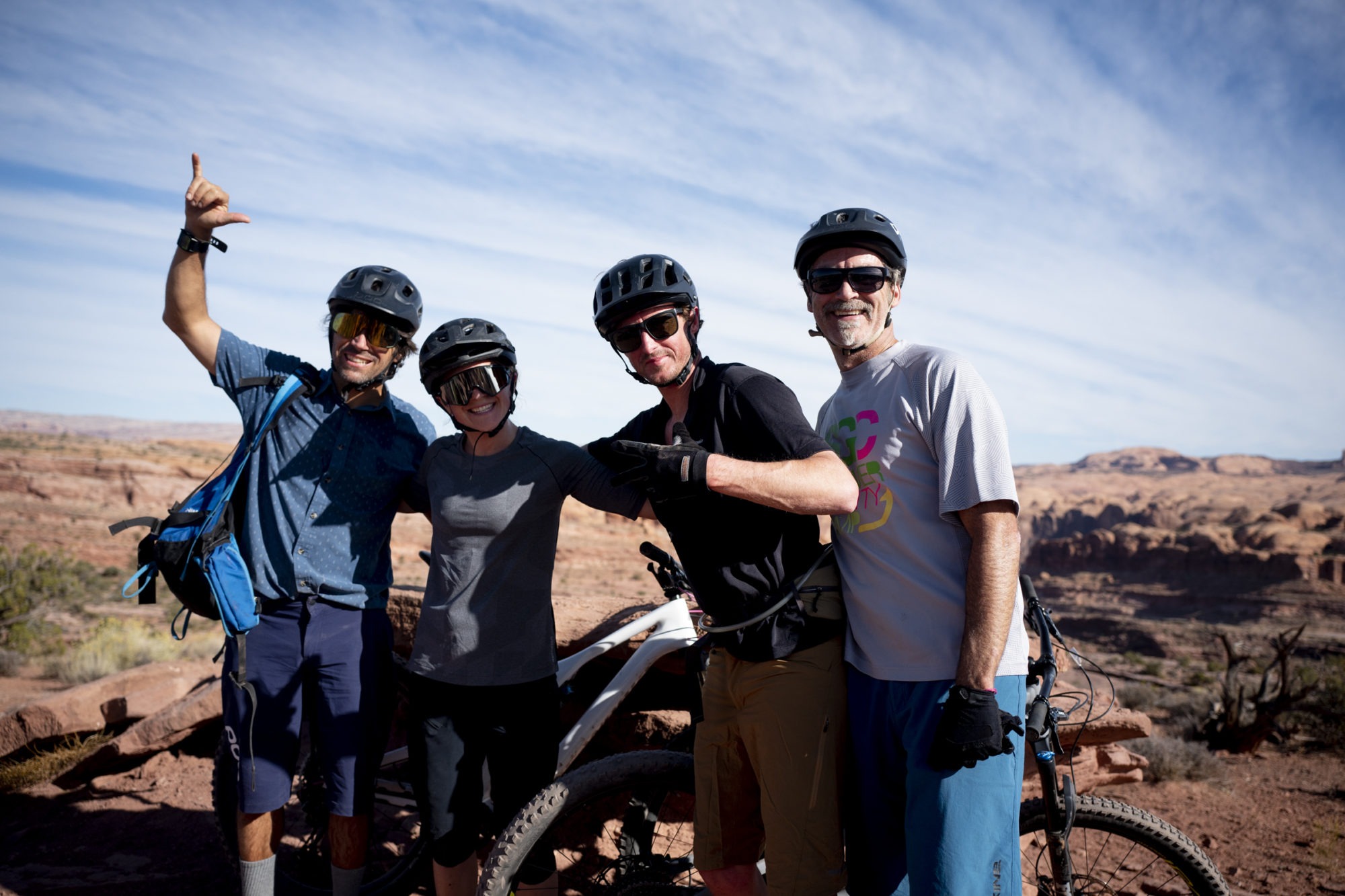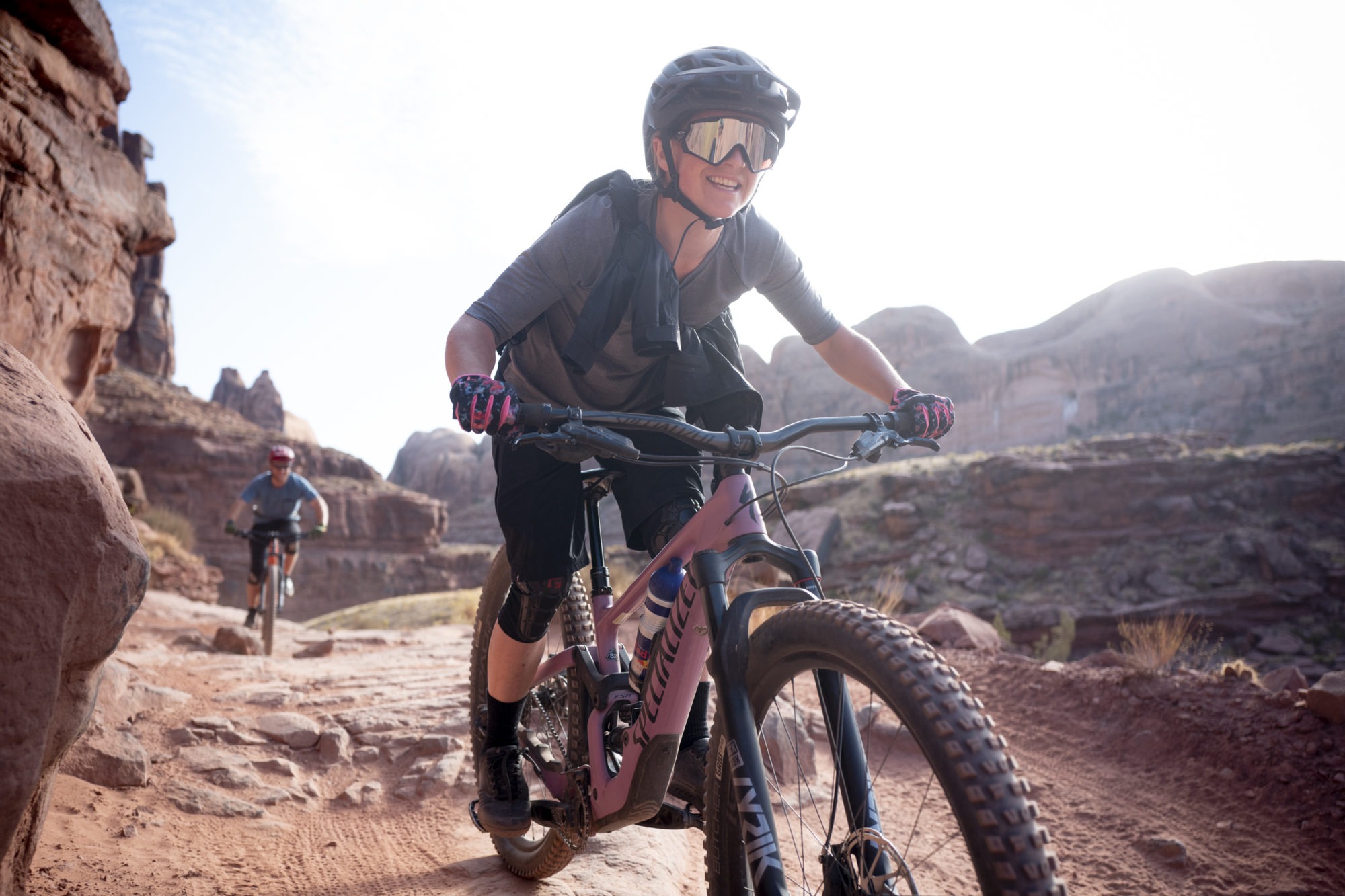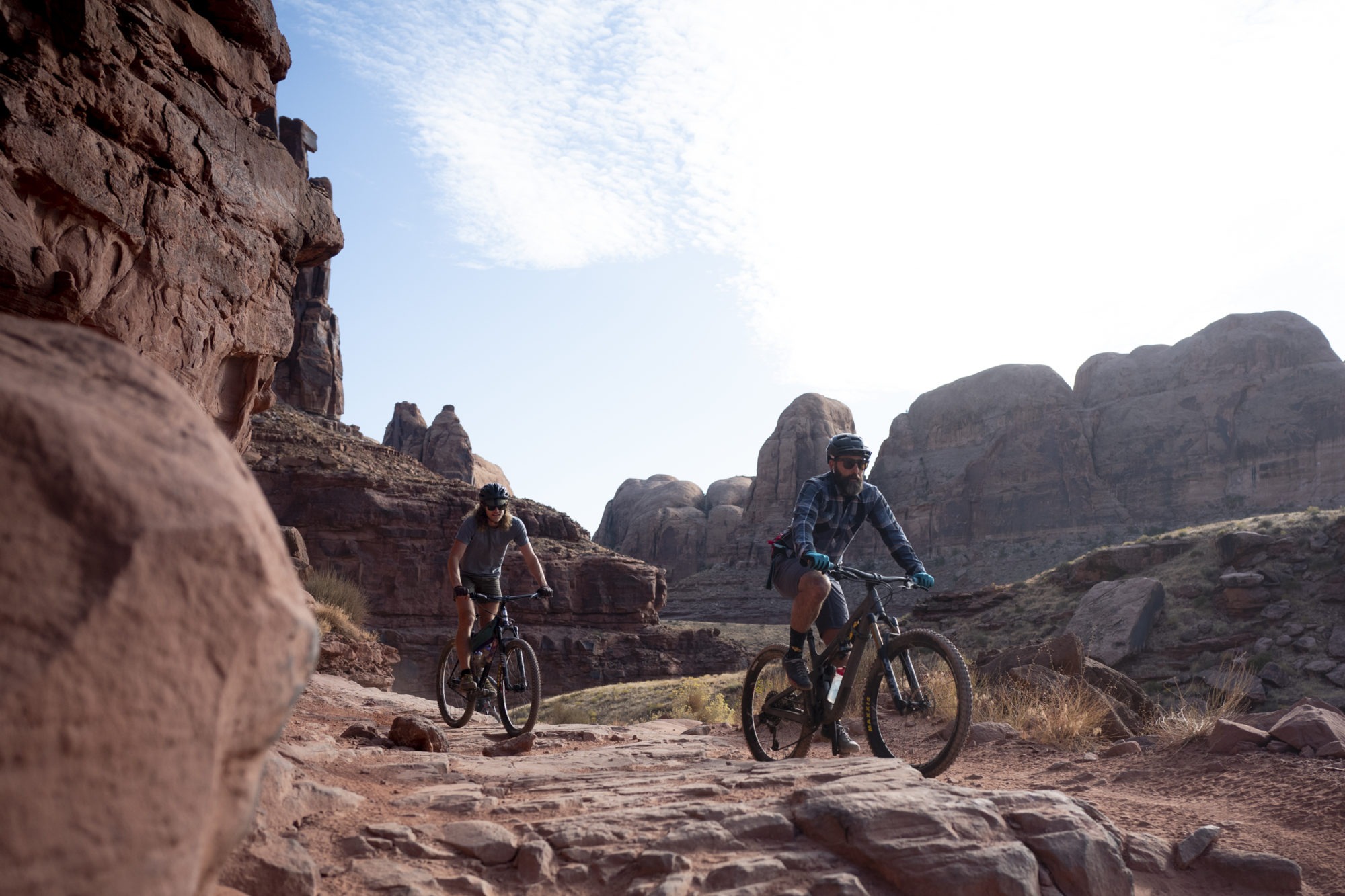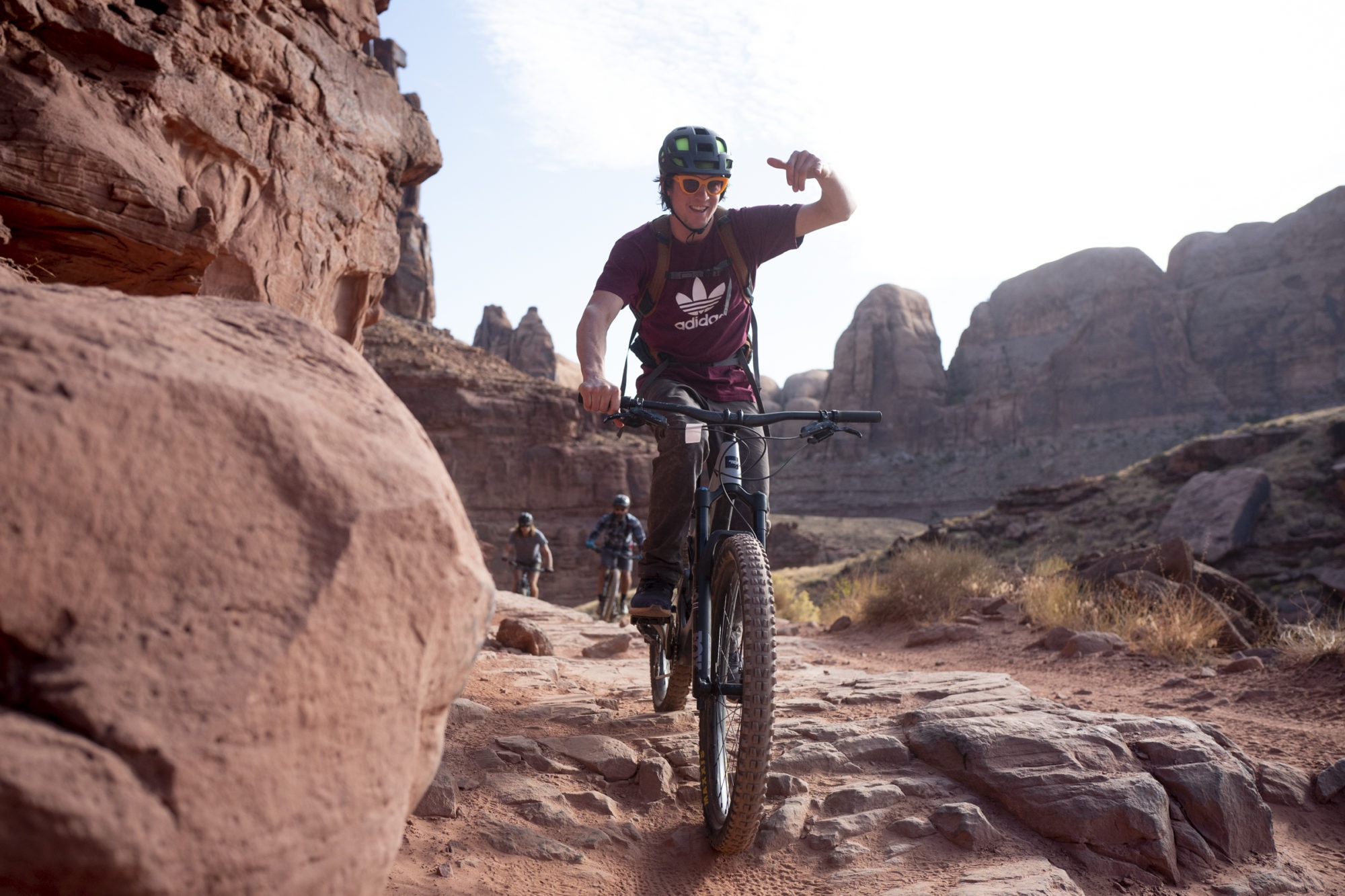By Grant Perdue
Flowing sandstone – it mirrors waveforms in its unique pattern of uplift. A wild saturated red, orange. The expanse seems endless – almost imaginary, the way the rocks bend and flow miles-bound. Towering walls of vibrant varnish loom over areas of the trail – the wind etches carvings into seemingly impermeable layers. Whooom! Dust kicks up in the sky, filling the air with a strong haze as bike tires buzz into the faint distance. Yee-haws and hoo’s echo through the barren landscape – they are absolutely ripping!
This area, coined “Slickrock Trail,” resides in Moab’s Sand Flats Recreation Area, and has captured the utmost attention of mountain bikers and outdoor recreationists alike. If you’ve ridden the trail, you already know why. “I have always loved trails that were more about flow than purely technical features – and these trails, I think, are an incredible balance between the two,” said Wilson Rawlings, an avid mountain biker and student at CU Boulder. If you haven’t ridden there, check out this video and start daydreaming.
However, in February, the area caught the gaze of the oil and gas industry who sought after its potentially rich underground. Sweet, sweet fossil fuel. Portions of Sand Flats, technically owned by the Bureau of Land Management (read: your public lands), were anonymously placed on the leasing docket for extractive purposes. After immense public outreach on local and national levels, the BLM removed the land parcels containing Slickrock trail from the list. It turned out to be an epic example of the power of public voice––heck yeah, that’s what we’re talkin’ about! However, many BLM lands experience the same process with more turmoil. It’s a sticky situation.
BLM – What’s the Deal?
For starters, BLM land is public land––however, it sits under a multiple-use mandate, and those uses can include everything from recreation, to grazing, to extraction. “The underlying mission of the BLM is sustaining the future yield of all of these multiple uses,” said ICF Environmental Planner Meghan Henegan. So, how does a BLM land parcel get on the docket for potential leasing?
- 1. An open auction is held to lease BLM land for one of the multiple-uses. For example, an auction is held for oil and gas drilling-related leases. Here’s the schedule if you want to keep up with the action.
- 2. An analysis of impact by the National Environmental Protection Agency. “It’s sort of the bedrock environmental rulemaking process that all of these land management agencies have to go through,” said Henegan.
- 3. Bombs away. While the NEPA Analysis lays out all potential impacts for various forms of development on the land parcel, the BLM does not necessarily have to go with the option of the lowest impact. They just have to go through the analysis.
Through the above processes, a whopping 1 billion barrels of oil were produced on public lands last year. That’s a thirty percent increase from Obama-era oil production, credited to the Trump Administration’s call for heightened energy independence. Nowadays, if solely U.S. public lands were a country, they would rank fifth in the world on emissions according to the Wilderness Society. In an era where climate change is the most apocalyptic threat to the world as we know it, the idea of increasing oil production so heavily is… frankly a bad one.
Fret-not, though, because a new house bill aims to cut public lands emissions to zero by 2040. This represents one of those top-down approaches that we value so much––think about i––the number five emitter in the world, gone. That’s really rad. However, it would carry a massive impact on one of the multiple-uses of public land, and may be difficult to execute. “We want electric cars on the roads en mass by 2030. Electric cars need lithium. Where do we get it? If we can’t grow it, we have to mine it,” said Henegan, noting the dichotomy of mining for non-renewable gains vs. mining in favor of a renewable future. It’s a sticky situation.
Our public lands are our great escapes––home-away-from-homes, places where we are free to romp about as we please. Our public lands fuel our adventures––pleasant ones, character-building ones, type 1 and type 2 fun-ones. They are critical to our lifestyle as outdoor enthusiasts. So please, help me in retaining my sanity and that of people like you and I by getting more involved with POW to support renewable energy and retain radical experiences.
*Photos courtesy of Aaron Blatt




